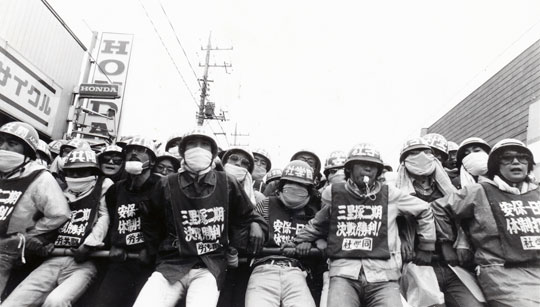

Here and now, there is a lump of photos. If you pick it up, it is a nostalgic photo. “Huh, what happened to that picture?” “Come to think of it, that one is missing too.” …… Well, if you think about it, this is a kind of wreckage. I wonder if the missing photos are already in the hands of someone (the appropriate party?). If that is the case, then let them rot …… and the tingle in my heart that I cannot abandon them made me think of publishing them on the web with bitterness in my heart.
Just a little more time to decay? ─ ─ That’s right, but it is also quite fascinating to try to preserve a slice of the history of the War Flag School on the Web. Hopefully, the photos that are destined for private collection will be added to the “Battle Flag Collection”!
(August 25, 2010)
Taken from the top page of the “Battle Flag Collection”
[Sponsor Ad]
Contents -このページの目次-
- 1. About the “Battle Flag Collection”
- 2. Current Management Policy
- 3. What is the Battle Flag Faction?
- 4.About the name of “BUND”
- 5. special thanks! Websites that have helped us
1. About the “Battle Flag Collection”
The “Battle Flag Collection” is a website established in August 2010 as part of an attempt to preserve on the Web photos of various battles of the “Battle Flag Communist League(BFCL) ” a faction of the New Left Wing in Japan, that ran through the 1970s and 1980s. The link was broken (or disappeared?) in the spring of 2021, and the site is no longer available for viewing.
Soka, the administrator of “HATA HATA,” is acquainted with the administrators of the “Battle Flag Collection” and received verbal permission from them to reproduce the photos. After confirming that the link was broken, we were inspired by the desire to preserve the contents on “HATA HATA” and decided to publish them on this site.
Please note that the text on this page has been added and reorganized from several pages of the “Battle Flag Collection” and the responsibility for the text lies with Soka.
The administrators of the “Battle Flag Collection” and “HATA HATA” once belonged to the Battle Flag Faction, but have since left the group. We are not associated with any of its successor organizations or activities. The statements on this site are the views of individuals and are not intended to be consistent with the views of the former Battle Flag Faction. The accuracy of the content of this site is not guaranteed.
Those who wish to verify the historical accuracy of this site should consult the original documents. Reproduction or quotation is permitted, but any consequences resulting from such use are the responsibility of the quoter.
2. Current Management Policy
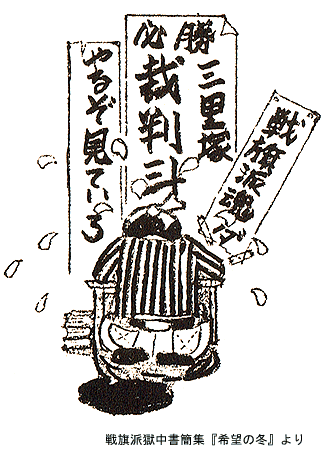
The opening is described above. You may be asking, “What happened to the recap?” I will only describe the immediate operations here.
The manager of the “Battle Flag Collection” had in his possession a group of photographs (with the addition of a clump of films later) that capture a slice of the 20-year history of the Battle Flag Faction. Some of them were organized chronologically, while others remained in chunks, and many of the former overlapped with those published in Parts 1 and 2 of the photo book “Northwest Wind Forges the Party” (1984: published by Senki-sha).
In the “Battle Flag Collection,” the photos were listed in chronological order, starting in 1971 and ending in 1990, and were organized by year. Therefore, we will reproduce and store the contents of the “Battle Flag Collection” up to 1990, and then (or in a timely manner) add photos scattered in our collection, on the Internet, in printed materials, etc. (For the source of online materials, please refer to the following 「Thanks for your site」.
We also plan to post photos of prison newspapers, mountain trips, and others that were included as extras in the “Battle Flag Collection,” but unfortunately, we have only saved a fragment of the mountain trip photos here.
It is no exaggeration to say that mountain climbing, in particular, accounts for half of the BFCL members’ memories (?). We are looking forward to your cooperation.
[Sponsor Ads]
3. What is the Battle Flag Faction?
(1) Notes on “Battle Flag Faction”
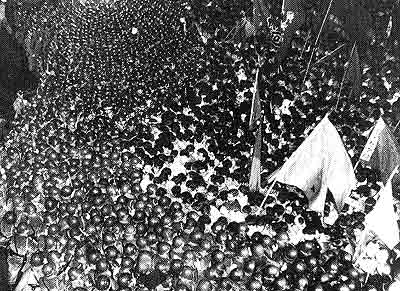
The term “Battle Flag Faction” here refers to a group of the New Left that operated from the 1970s to the 1990s under the names “Communist League (Battle Flag Faction)” and “Battle Flag Communist League“. Other names and derogatory terms included “Hyuga-ha” and “Ara-ha“. Many of those involved are now in their 40s to mid-70s, living in a corner of the city with various feelings.
Historically speaking, there are several other “Battle Flag” groups, such as the “Battle Flag Faction” group in the proletarian literary movement of the 1920s, famous for Takiji Kobayashi’s “Crab Ship,” and the Battle Flag group during the first Bund split that fought the 1960 Security Treaty struggle, but these are not related.
The origin of the Battle Flag Faction stems from the Communist League (Second Bund) and the National Committee of the Socialism Student League(SSL) , both of which were reconstituted in 1966. It was a faction formed in the process of Bundt’s split around the time of the 1970 Security Treaty and Okinawa struggles, and took the name “Communist League (Battle Flag Faction)” in the sense that it was a branch of the Communist League (it was sometimes referred to as the “Theoretical Front Faction” from the name of the theoretical journal of the SSL).
As stated above, this photo book is written from the viewpoint (subjective) of the Battle Flag Faction (Hyuga) group. I don’t think I have any right to be criticized for that. I have no intention to make it an academic study of a vast amount of materials.
If you are from another school and do not agree with our description, please start your own “… Faction collection” based on your own subjective view. It would be good if a third party could compare and browse these collections.
(2) “Battle Flag Faction” designation issue
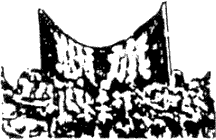
As mentioned above, the name “Battle Flag” is confusing and difficult to identify by itself. This is partly because the official name of the central newspaper since the formation of Bundt in 1958 has been “SENKI(=Battle Flag)” which has been a provisional name for the “Party Central Faction” or “Secretariat Faction,” which holds the right to publish the party’s official newspaper against the splinter groups.
For example, in the process of the second Bund split around 1970, the part of the party that remained with the “Red Army Faction,” which forced a split, was sometimes referred to as the “Battle Flag Faction,” and in the subsequent split of the Rebellion(叛旗) and Situation(情況) Faction, the remaining Bund body was sometimes referred to as the “Battle Flag Faction”. The fact that several “Battle Flag Faction” groups existed side by side following the split of the Battle Flag Faction in 1973 also added to the annoyance.
Since two “Battle Flag Faction” with the same name are interchangeable, the top pen name was taken and called the “Hyuga Faction,” as it is referred to here. The other was called the “Nishida faction”. It now calls itself the Communist League (Unification Committee). Other splinter groups at the time of this split were the “Proletarian Battle Flag” faction and the “Internationalist” faction. In 1980, the name was changed to the “Battle Flag Communist League (BFCL)” to avoid name confusion.
During this period, after the denunciation of the Sayama discrimination trial and the reconstruction of the local fighting group of Sanrizuka (Narita Struggle), we took part in the March 26, 1978 control tower occupation struggle as part of the “Three Red Hell Faction” or “Association in Solidarity with the Sanrizuka Struggle,” including the 4th Inter-Japan Branch and Proletarian Youth League. In the 1980s, the BFCL engaged in various battles, including guerrilla and partisan fighting in the Sanrizuka and anti-empire system struggles.
As a side note, during the Sanrizuka struggle, the local farmers distinguished between the two groups by referring to them by the location of their respective solidarity huts: the Battle Flag faction here (BFCL) as “Yokobori Senki” and the Nishida faction as “Iwayama Senki”. (“Senki” is Japanese for “Battle Flag”)
Eventually, in the 1990s, the BFCL abolished the name of its offshoot and took the name “Communist League”. Later, it was transformed into “Bund,” which did not aim for communist revolution, and then into “Actio, a general incorporated association for ecology and peace,” and the “Battle Flag Faction” as a new left-wing organization dissolved (disappeared).
Anyway, enough about the name issue, below we will focus on a few nodes from 1970 to 1990 and note the history of the Battle Flag Faction, which cannot be expressed in photographs.
Hereafter, the “Battle Flag Faction” will be referred to as the “BFF”.
(3) 1970 Second Bund split and the formation process of the BFF
a. Second Bund after the 7.6 Red Army Faction split in 1969
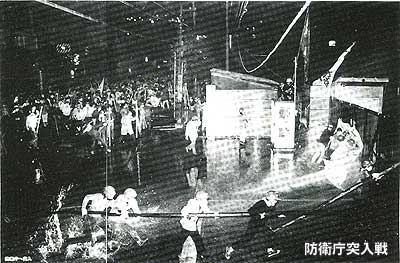
The Second Bundt originally lacked a strong mainstream faction, and when a group led by Ken Ichimuki (Takaya Shiomi), who strongly advocated an armed uprising, split off as the “Red Army Faction” in 1969, the party fell into a state of conflict among a hundred families, and the independence of various groups within the party and local organizations and their bargaining with each other further developed.
The JCP is no exception, but the core faction of the Revolutionary Core League, the Revolutionary Marxist faction, and the Socialist Youth League Liberation faction, which survived after the 70-year Security Treaty, had a relatively strong mainstream faction.
Be that as it may, looking at the main student movement, in the Tokyo metropolitan area, the leaders of the Party and the Socialist Students League were successively imprisoned in the battle at the University of Tokyo’s Yasuda Auditorium in January 1969 and the Security Treaty and Okinawa struggles after April 28, 1969. Half of the remaining students went to the Red Army Faction, and the student and high school student organizations were in turmoil.
In such a situation, the moderate part was less confused and unintentionally became the mainstream faction in the metropolitan area, which is probably the “Rebel Flag Faction” of Chuo University Bund. Furthermore, the “Situation faction” of the Meiji University Independent SSL group, which had been under pressure, will also be revived since the radical faction of Meiji University has disappeared.
In Kansai (Kyoto, Osaka), students who did not go to the Red Army Faction but stayed behind became non-sectarian members of the Red Helmets, and were reverting to the “Kansai Bund,” a local independent force before the formation of the second Bund, which was mainly a workers’ organization.
In the fall of 1969, the Security Treaty struggle ended in failure despite the efforts of General Secretary Sasaki and other leaders in Tokyo, and Toshio Fujimoto (Zengakuren chairman) was released from prison and withdrew from the struggle. 1970 began amid such difficulties.
b. Second Bund around early 1970
Apart from the central organ “Senki (Battle Flag)”, a number of local, prefectural, and district committee journals were published independently (selfishly), and these became the rallying axis for each group (various factions within the party). This is a bit complicated, but here is a general summary, including what happened after Bund’s disintegration.
■『Battle Flag』『Communism』 Published : Communist League (inherited the name of the journal of the first Bund).Around 1969-70, Kazuo Sasaki, Susumu Noda, and others were the editors and publishers and the central secretariat and editorial office coordinated the various factions. The office (Senki-sha) on the first basement floor of the Takizawa Building near Suidobashi Station on the Sobu Line (2-7-6 Misaki-cho, Chiyoda-ku) was the target of disputes between the various factions.
■ 『Theoretical Front』 Published : Socialism Student League (SSL)→Communism Youth League. The main members who would later form the BFF, including Susumu Noda (Editor-in-Chief of Battle Flag), Kakeru Hyuga (Chairman of the SSL), Hiroshi Ise, Toru Shiroyama, Yasushi Muranaka, Fumito Akai, and Teru Nishida wrote the articles. The journal’s other name, “Theoretical Front faction,” was derived from the name of this journal.
→The theoretical journal of the BFCL since 1980.
■ 『Rebel Flag』 Published : Tokyo Santama Area Committee (first published in 1968/11). Osamu Mikami, Yoh Kozu (Chuo University Bund) et al.→In June 1970, the Rebel Flag Faction was formed. There were many sympathizers among students at Aoyama Gakuin University, in the Tokyo metropolitan area, and nationwide.
On June 11, during a political rally of the Bund held at Toshima Public Hall in Ikebukuro, Tokyo, the Rebel Flag Faction and Circumstances Faction attacked the Battle Flag Faction alliance, resulting in a split. →In 1975, Osamu Mikami withdrew from the group, and it was voluntarily dissolved at the end of 1976.
The “Old Rebel Flag Faction Mutual Aid Association,” which seems to have been established for the purpose of rescuing the defendants of the 9.16 Toho Crossroads battle and others, continues to exist today, led by Kozu Yo and others.
■ 『Iron Front』 Published : Tokyo Southern District Committee. Chair of the Bund 8 Congress, Saragi-Tokuji et al. Southern District, Senshu University SSL, Medical Federation students, etc.→1970.12.18 Joined the “Uprising War Faction”.→ Iron Front Faction
→Split into Uprising Faction(Saragi Faction, organ『Uprising』, Published : Communist League)and Uprising Left faction (Akio Sato et al. → Editorial Board of the “Proletarian News” agency) and others.
→Later, around 1998, Tokuji Saragi left the organization, and the newspaper was changed to “Akaboshi” (Red Star).
→In March 2009, Maki Wataru & Takaki Akai (Uprising faction) , together with Bunji Hatanaka (Bund Metropolitan Committee), Bontaro Asahi (Kanagawa Left faction → Proletarian Press Editorial Board) , formed the “Communist Council” (organ “Red Proletarian” ). Akaboshi joins and ceases publication.
→ Re-published in January 2016 with a name change to “The Red Stars“. The Communist Council appears to have disbanded.
■ 『Leftist』 Published : Kanagawa Prefectural Committee (first published in 1970/1). Bontaro Asahi (from Kansai, member of the Political Bureau of the 7th Congress) and others→1970.12.18 Joined the “Uprising War Faction”.→(Kanagawa) ” Leftist” Faction.
→Later, the editorial board of the Proletarian News Agency (a.k.a. the “Toshima Group”. According to sources, “uprising left faction” and the minority of the “Red Press faction” joined together).→Joined the above-mentioned “Communist Council” in 2009.
■ 『Beacon』 Published : Kansai District Committee (1970/8 reprint)→1970.12.18 Joined the “Uprising War Faction”.→Beacon Faction→It branched off into the National Committee of the Communist League (Beacon Faction) and the “Red Press faction” = Communist League (RG faction), including Hitoshi Ebara and others.
→Later, in 2004, the National Committee faction joined forces with the Nishida faction of the BFF to form the Calls itself the Communist League (Unity Committee). The official newspaper was integrated into “Battle Flag”.
*Note(1): What is the “Uprising War Faction”?
On April 28, 1971, at the time of Okinawa Day, “12.18 alliance Bund” (Kanagawa Leftist Faction, Kansai Local Committee Faction, and Saragi-Faction), Red Army Faction, Keihin Security Joint Struggle, Doshisha University All-University Struggle Committee, Kyoto University C Front, and other non-sects of the Red Helmet group held a joint rally in Shimizudani Park, Tokyo. The “Uprising War Faction” is the self-proclaimed name of this joint front. It is not the name of a single faction. It was a name used to demonstrate their leftist legitimacy to the masses.(The Saragi-Faction did not participate in the rally, but joined only in the demonstration.)
The only organization that clashed with the Battle Flag Faction in Hibiya Park was the “12.18 alliance Bund”. Within the Battle Flag faction at the time, it was disparagingly referred to as the “illicit union of Right Forces”.
*Note(2) : What is “RG”?
RG is the German word Rote Gewalt, (literal translation: “Red Power” or “Red Violence” ; Free translation: “Communist Sturmabteilung”). Originally Takaya Shiomi: a chairman of the 7th grand conference, and later chairman of the Red Army Faction) it was named after a unit of the SSL and others who, during the April 28, 1969 Okinawa struggle, took armed possession of Ochanomizu MD (Tokyo Medical and Dental University) the night before, broke through the riot police wall, and charged Akihabara Station to the capital center. After that, Shiomi went on to build the “Red Army,” which had a stronger military flavor.
On the other hand, after the split of the Red Army faction, Bund organized the “RG,” which had the meaning of an elite minority force, in preparation for the 1969 Autumn Security Treaty and the Battle of Okinawa, by all groups except the Rebel Flag and Situation Factions. Later, Hitoshi Ebara used it as the name of their own faction when they split from the Beacon Faction.
■ 『ROTE』 Published : Preparatory Committee for the Reconstruction of the Communist League After splitting from Bund in June 1970, the Situation Faction (Independent SSL of Meiji University → Reiji Matsumoto, chairman of the 6th Congress, and Sen Koga,) began publishing a bulletin, “Rote”.
→Later, Reiji Matsumoto published “From Far Away”. In 1990, Sen Koga and Wataru Hiromatsu launched the second phase of “Circumstances”.
The Situation faction underwent a transition from the shortstop faction to the Revolutionary Flag faction to the Red Flag faction, and in 2009, the Metropolitan Committee, a faction of the Circumstances faction, formed the above-mentioned “Communist Council”.
c. “Battle Flag Faction” Formation
In addition to the above, many “journal papers” were also published on B4 sized straw mats, galley printed and stapled, and among these, the one that later became the rallying axis of the Battle Flag Faction was the,
■『Red Texas』 Published : : Tokyo western Area Anti-Imperialist Front. This was published by the “Youun(妖雲)-Tei” fraction, which combined some of the student and high school student organizations in the Tokyo metropolitan area after the “Security Treaty and Okinawa Decisive Battle” in the fall of 1969 with the Todai Toryo Boshoku group, etc. The main articles were later included in “Theory Front”.
Local organizations in Kyushu, Hokkaido, Aichi, and other regions, which had distanced themselves from the various factions in the center and Kansai regions, joined together, as well as some nonpartisan, non-sectarian students who had been seeking a direction after the Zenkyoto. Susumu Noda, editor and publisher of the central organ “Battle Flag,” will also participate.
Thus, a current was formed that strongly demanded that the central factions depart from the free but irresponsible “factional coalition party” to a “single party” with responsibility for the field and local areas. With the newly created party organ, the Organizing “Committee for Youth and Students”, as a foothold, this current made inroads into the party center in a short time.
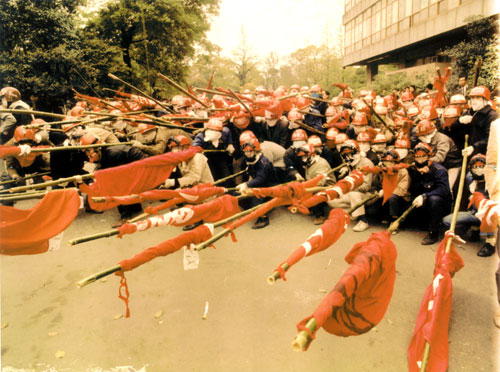
Eventually, as noted in the previous section, after the June 1970 split of the Rebel Flag and Situation Faction, the main body of Bundt (otherwise known as the “Battle Flag Faction”), on December 18, 1970, the three factions of the Uprising War Faction (Kansai Regional Committee Faction, Iron Front Faction, and Kanagawa “Leftist” Faction) forced the holding of an independent “Communist League political meeting” (= 12.18 alliance Bund), and the three factions jointly published their own “Battle Flag” , declaring their insulation from the Battle Flag (Central) faction and thus confirming their split.
The Battle Flag (Central) faction fought and overwhelmingly won a battle with these anti-Battle Flag coalitions in Hibiya Park on April 28, 1971, over their participation in the Okinawa rally that same day.In the aftermath of this defeat, the “12.18 alliance Bund” was disorganized and collapsed internally. Issuance of the alliance Bund edition of “Battle Flag” also ceased (A total of 14 issues from No. 250 to No. 264 existed alongside the central “Battle Flag”).The coalition was dissolved and Faction fell apart.
The Battle Flag faction then declared “Cessation of Factional Struggle and Conversion to Struggle Against Power“. We called themselves the “Communist League (Battle Flag Faction)“, meaning that they were also a faction of Bund. This marks the end of the Second Bund Factional Struggle. Thereafter, as mentioned in the previous section, the splits and divisions among the various factions continued.
【Memo】 In the early days of the Communist League (=Bund) factional struggles, both sides sometimes asserted the legitimacy of their own faction to the masses by claiming that they were the legitimate Bund (official party) and the others were anti-party molecules – splinter groups. But Bund, who did not have a “strong mainstream group”, was not a very meaningful advocate for others as to which faction was official.
However, once such a claim was made, it was difficult to say that they would later retract it, but it was probably necessary to acknowledge the status quo in order to put an end to the faction’s internal strife and return to the original struggle with state power. The decision made at this time is highly regarded in the history of the Battle Flag Faction(BFF).
However, whether this has completely resolved the armed conflicts (Gewalt) between the factions and the various factions is not a given. It is not so easy.
Since then, the BFF has participated in various struggles for the reversion of Okinawa to Japan.On the other hand, gewalt with the Red Army faction and the ML faction (=the Maoist “Marxist-Leninist League”, which followed Bund line, split and disappeared after June 1970) in the first half of 1970, the Rebel Flag faction from the latter half of the same year to April 28, 1971, the Uprising War Faction groups and the Situation Faction after April 28, and non-sects (Meiji University Press Association = MUP). The attack on the MUP and the attack on Mr. K of the “Association to Support the Struggle for the Torture Law Trial” were later apology On the paper of Battle Flag. In the process, the BFF was also experiencing the seeds of internal divisions.
【Memo】 The factional struggles of this era were not so fierce as to obliterate the other side. A fight to the extent of an internal fistfight was no concern of others, but it was clearly too much for the morality of the faction to reach out in the same sense to an outside mass movement. An apology was in order.
(4) 1973 “Battle Flag Faction” split
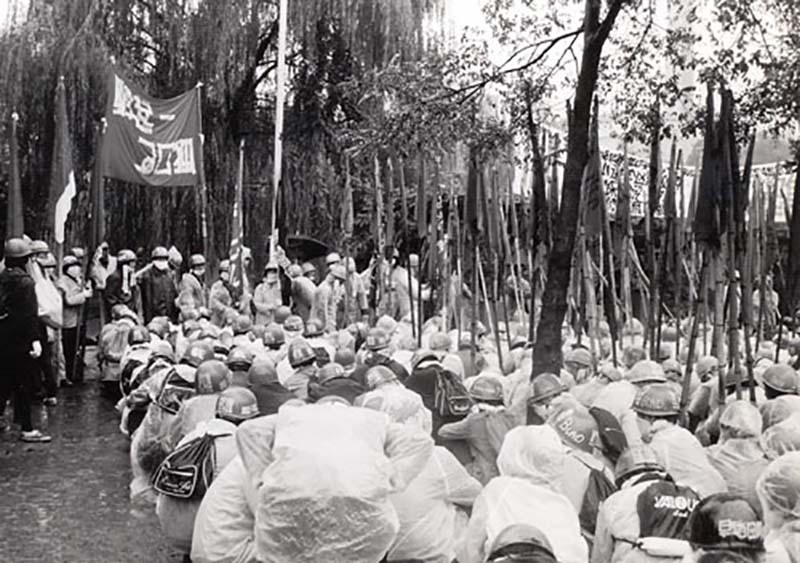
Nishida Faction and Hyuga Faction appeared separately, and the split became public.
In June 1973, the Communist League (Battle Flag Faction) effectively split at the 12th Central Committee Meeting held at “▽▽ Land” in Kanagawa Prefecture (the split was finalized in October), and the first phase of BFF construction since the “Youun-tei” fraction in early 1970 came to a halt here, forcing a fresh start.
Incidentally, the Central Committee, composed of permanent Central Committee members and local and district representatives, was the highest decision-making body at a time when the Alliance members’ congress had not yet been held.
Various explanations and excuses for the split and the points of contention over the nature of the organization, the armed struggle, and the line issues have been given by the various factions since then. Since the contents of these statements are extremely complicated and I have no way of knowing the movements of the central committee members at the time, and since this is not the place to discuss orthodoxy, I will only give an overview of the situation in outline.
Looking back chronologically, the Shibuya group (→Internationalist faction) was formed at the end of 1972, and the “Adachi Shokai” group(Nishida, Oshita, Shiroyama) was formed in March 1973 (Adachi Shokai is a pseudonym for the office set up by this group).
According to Nishida of the Adachi group, this process was “a response to the management of a splinter organization by the Hyuga Central Faction” after the summer of 1972, but according to Hyuga and others, “Nishida and others took in the districts and regions in their charge and also used the opposition to N’s bureaucratic management to form their own splinter groups.
The Adachi Shokai group split into the Nishida/Oshita and Shiroyama groups during this process, splitting the BFF into four groups.
The following is a schematic overview of the power of each division (districts, etc., classify the majority, while the minority is not noted. Overlaps are for approximately two halves. ★ are approximate ratios. The name of each faction is the name of the newspaper or magazine in which it is published, with “faction” added.)
- Battle Flag Faction(Hyuga) Western Tokyo, Saitama, Kanagawa, Aichi, Chugoku (Tottori)
★★★★★★★★ - Battle Flag Faction(Nishida) Central and Northern Tokyo, Kanagawa, Chugoku (Yamaguchi), Kyushu, Okinawa, Sanrizuka, Buraku Liberation Front
★★★★★★★★★★★ - Proletarian Battle Flag Faction(Shiroyama) Hokkaido
★★★★ - Internationalism Faction Some students and workers in the metropolitan area
★
It is important to note that the 1973 split between the two factions did not lead to an internal conflict. Although it cannot be said that there were no fistfights or other such incidents, neither did they aim at the physical dismantling of the other faction.
This is self-criticism of the attacks on the MUP, etc., and is positively evaluated in the course of subsequent history as the embodiment of reflection on the doctrinaire sectarianism and internal hegemony of the New Left. Well, that’s true, but is that a little too cool? In the process leading up to and around the split, a succession of mourning young comrades left the Battle Flag Faction……..
【Memo】We risked our lives, but overnight the turnout was not only halved, but reduced to one-third. It must have been very painful…. Not only did people leave, but some even committed suicide.
The spirit of the BFF activists, who had originally rallied to Bund in the wake of the anti-Vietnam war, the Security Treaty and Okinawa issues, and the school struggles, was worn out and exhausted by the internal strife with various factions and non-sects, and by the numerous factional struggles. Many of them must have thought that they would continue their activities if there was no internal strife (even if this would not heal their wounds).
Then, on July 7, 1974, Battle Flag Faction decided to make a fresh start at a political rally under the banner of “Blood debt and Fierce Reflection” (the second foundation). Thereafter, as a single party freed from the wear and tear of factional struggles and orthodoxy, the Battle Flag faction learned from and was supported by many people, including in the denunciation of the Sayama discrimination trial, the anti-Emperor struggle, and the reconstruction of the Sanrizuka present fighting group, and went on to fight while being re-trained from the ground up.

During this process, the BFF developed its own printing and publishing system for its bulletin, Battle Flag. Initially, the paper was written in Japanese type, but eventually a photo typesetting machine was introduced, a printing press was installed, and the paper was stapled in B4 size for some time. It was not until the end of 1980(1981 New Year issue) ,after the name change to Battle Flag Communist League(BFCL) , that the paper finally took on the appearance of a newspaper (tabloid format).
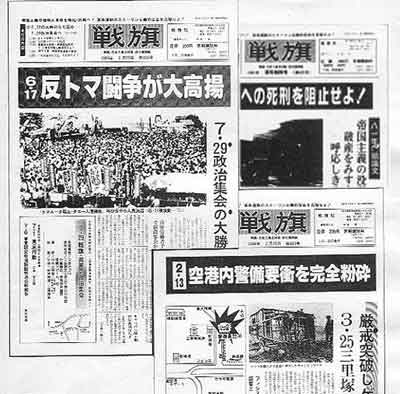
The following is a brief description of what happened to each faction that separated in the 1973 split.
- Battle Flag Faction(Hyuga) Communist League (Battle Flag Faction) → Renamed “Battle Flag Communist League” in 1980 → “Communist League” in 1993 → “Bund” in 1997 (abandoned communism as a revolutionary strategy) →2008 “Actio Network” (transformed into a peace and environmental organization [dissolved Communist League & Bund])
- Battle Flag Faction(Nishida) Communist League (Battle Flag Faction) →2004, “Communist League (National Committee) = Beacon Faction” and Organizational Integration. They call themselves the “Communist League (Unification Committee). The official newspaper is merged with “Battle Flag”.
- Proletarian Battle Flag Faction Proletarian Battle Flag Editorial Board/Hokkaido Local Committee of the Communist League (Battle Flag Faction)→1976 “Hokkaido Communist League” →Currently unknown (spontaneous extinction?)
- Internationalism Faction Internationalism Editorial Board→ Organizational merger with the Japanese Communist Party (Proletarian Revolutionary Faction), which was a continuation of the JCP’s Statement Faction, to form the “Japanese Communist Party (Action Faction)“.
Information from Yonezawaizumi (thanks)
@yonezawaizumi (Oct 11, 2021)
“At least four members of the Proletarian Battle Flag group formed a line in the 1987 Haneda struggle to stop the visit of the then Crown Prince to Okinawa, and I have heard that there are members in the Tama area. I have also heard that there are members in the Tama area. Aside from the organization, two members of my acquaintance are still active in the citizens’ movement in Hokkaido.”
すみません、プロレタリア戦旗は少なくとも87年の皇太子(当時)訪沖阻止羽田闘争で4人で隊列組んでましたし、多摩地区にメンバーが居ると聞いてました。また組織的にどうなのかは別にして、北海道内にて私の知人のメンバーが2人、今も市民運動で活動しています。 @kousuke431https://t.co/sgLSqOcGzj
— よねざわいずみ@旅行のつど直前にPCR検査 (@yonezawaizumi) October 11, 2021
[Sponsor Ad]
(5) 1980 Name changed to “Battle Flag Communist League (BFCL)”
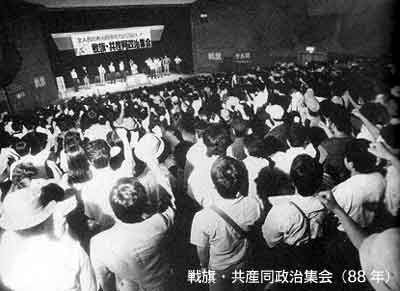
Names are so important. I remember the current Actio representative saying that somewhere.
Don’t ignore the times, the lines, the human factor, etc.! You may be offended, but it was undeniably true that the Battle Flag Faction made a great organizational leap forward only in the 1980s, when it changed its name to the “Battle Flag Communist League”.
Battle Flag Faction, which had been smaller than Adachi Shokai Group (Nishida Faction) at the time of the 1973 split, was re-launched after the 1974 7.7 rally. By the late 1980s, it was considered “one of the main forces of the New Left” by the national police and the media.
What was the situation like for both sides when, seven years after the original split, there were still two “Senki-ha” (Battle Flag Faction) and two “Battle Flag” (official newspaper) under the same name? At the Sanrizuka rally, both groups wore red helmets at the same venue, and both flags and banners were of the Battle Flag group. The members who had just gathered at the rally would naturally have been confused.
However, if name = proof of legitimacy, there is no point in pressuring the other party to change its name. The only option is to change the name themselves. However, unlike “Actio,” which completely changes its contents, the basics are inherited, so it is hard to abandon both “Battle Flag” and “Communist League”. After much discussion, a proposal to change the name to “Battle Flag Communist League” was adopted.
It was January 1980 (I think) when the first general meeting was held in Tokyo. There were some outlandish name proposals, and the discussion was really serious. Along with the name change, a new constitution was adopted, and the basics of the organization, lines and policies were also decided.
We were freed from the curse of being one of Bund’s offshoots or one of the two battle flag factions. From this point on, the BFCL began its dramatic expansion.
In June of the same year, the Socialism Students Lleague(SSL) was reconstructed, and it made great progress in terms of mobilization, such as the Japan-Korea struggle in solidarity with the 1980 uprising in Gwangju, Korea, the struggle to stop the second phase of construction at Sanrizuka in 1983 while the opposition alliance was split, and the guerilla and partisan struggles against the Emperor System, while developing a mass, powerful struggle in conjunction with the guerilla and partisan battles.

This “General meeting of league members,” which we decided to rename, is in effect the equivalent of the “party convention” of the BFCL. So why is it called a meeting instead of a convention?
The Congress must be the “Rebuilding convention of the Communist League” = the 10th convention. That’s what the participants had in mind. The second Bund party congress was the 6th Congress of Reconstruction to the 9th Congress in 1969, so the next one was the 10th Congress. The same is true of the fact that the name of the BFCL’s theoretical journal was not “Communism,” the journal of Bund, but “Theoretical Front,” the journal of the National Committee of the SSL, from which they came.
However, the common understanding was that this would not be a “reconstruction by a large gathering of the various factions and individuals of the Second Bund” (a United Front Party or factional coalition like the Second Bund), but on the basis of the factional expansion of BFCL itself (a single party). Some Second Bund groups and individuals have called these ideas “Hyuga kakumar” and criticized them as sectarianism. However, this is due to differences in perspective and situational awareness of the Second Bund summary.
In fact, it is true that throughout the 1980s, there were some Bund-affiliated factions that repeatedly broke away from each other and called themselves “party factions. However, it would have been easier to understand the genealogy of each faction if they had formed a “united front” with a different platform and constitution, instead of forcibly joining forces and calling themselves a “party” in the field.
we had no way of knowing at the time that a little more than 13 years later, in August 1993, at a general meeting of members held in Hokkaido, Japan, the change of name to “Communist League” would be the first small step toward the transformation of the BFCL itself…….
4.About the name of “BUND”

BUND is a German word. It is not the English word “bund”. The meaning in English is “league”, “alliance”.
In 1955, when the JCP abandoned its revolutionary line at the 6th National Congress and bureaucratically purged the party’s anti-mainstream factions, students and young workers inside and outside the party formed the “Communist League”. From the beginning, they intentionally used “BUND” as their abbreviation, which became their common name.
This is an awareness of the First International “der Bund der Kommunisten (Communist League)” formed by Marx, as well as the intention to return to the communist ideals Marx spoke of in opposition to the corrupt “Partei”. From this point onward, BUND sometimes used German in the names of its organizations and institutions.
Thus, it was initially the name of an anti-mainstream faction opposed to the JCP. However, within a short period of time, BUND gained explosive popularity among the youth of the time, and the organization swelled. Members who had never been involved with the JCP accounted for 90% of the total membership. And these new members also proudly preferred the common name BUND.
Pronounced bu-n-to in Japan, the forces opposing the BUND deliberately pronounced it bu-n-do, a derogatory term. If you ever have the opportunity to speak with a BUND affiliate, you should be careful! 🙂
5. special thanks! Websites that have helped us
Although we have avoided stating each and every detail because it would be extremely complicated to display on the screen, we would like to take this opportunity to thank the administrators of the following sites and blogs that we referred to.
—
In creating the “Battle Flag Collection” website, we referred to “Northwest Wind Forges the Party,” Parts 1 and 2 (Senki-sha), as well as other materials and memoranda available on the Web for fact checking and other purposes.
- 1968, the time when it was the Zenkyotou Private handbill Storage
The site of a former activist in the NIU All-University Co-educational Conference. “Private handbillcontains not only leaflets related to the Zenkyoto of Nihon University, but also other university Zenkyoto, the bulletins of various new leftist groups at the time, and materials from the civil movement and anti-war Self-Defense Forces. - Onlookers’ Miscellaneous Notes
Blog of a former activist of the Meiji University Newspaper Publishers’ Association (MUP) and the Meiji University All-Campus Co-operative Conference. The book includes record reproductions of those days, on-site interviews, and recent reports by former activists. The various affairs of the second Bundt and Battle Flag factions at Meiji University around 1970 are depicted, including episodes unique to those involved.
The link site “Meiji University Zenkyoto, Gakkan struggle, Bunren” contains a variety of materials related to Meiji University, including Meiji University newspapers, materials related to MAP Kyoto, the 1968-69 National School Struggle “Library,” New Leftist party newspapers and booklets, and more. - HTAHATA
This is the personal website of Kosuke Soka, an activist of the BFF in the 1980s, and contains photos that appeared in Battle Flag in the 1980s. Documents related to BFCL in “Nostalgic Reference Room” are valuable materials on the Web now that Senki Faction has disappeared, and I referred to some of them. - Others Link
The names of the various New Leftist groups are handily summarized, perhaps by a communist hobbyist. - Rendaiko’s web page “Student Movement after 1971“
The paper by the Adachi Shokai Group (Nishida Faction) at the time of the split is included, reconfirming their explanation OR defense for the 1973 split. - Kozu Yo Juku
He referred to several matters, including the timing of the dissolution of the Rebel Flag Faction and his relationship with Osamu Mikami. - Wikipedia category “Bundt Schools”
Scattered inaccurate descriptions, but approximate reference.
ーーー
We would also like to thank the following sites for their help in transferring data to this site.
- Battle Flag Collection(Currently broken link)
As mentioned at the beginning of this article, this is the original site of this photo collection. The site was created by a number of administrators, who published clear, raw photographs from their collections. On this site, we plan to add to them the unclear ones recorded in printed matter and other media. - Liberacion S.A. BUND Der Kommunisten
A large amount of valuable institutional journals of various factions, mainly from the 60s and 70s, are stored in PDF format. The size of the collection is probably one of the largest on the Internet. - Volume(E:)
This is a site where the young administrator has compiled research materials on the student movement out of academic interest in the movement. It is said that in other countries, the student movement is usually taken up as a theme for students’ graduation theses, but it may be rare in Japan.


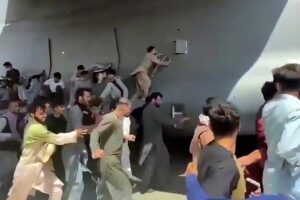
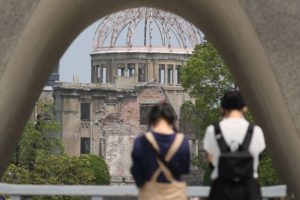
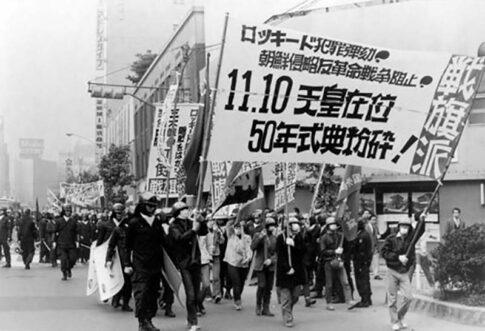





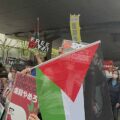

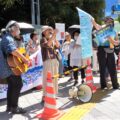

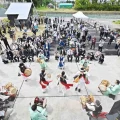




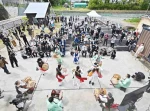
Leave a Reply